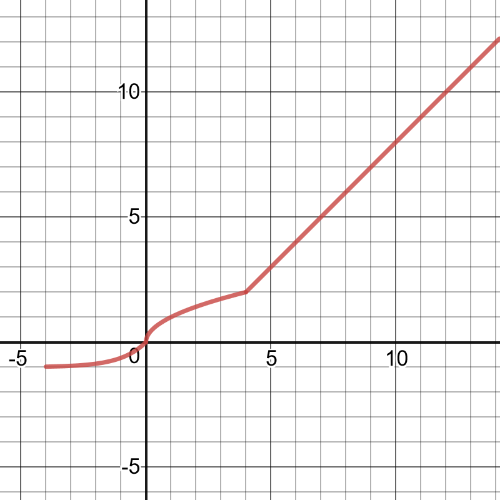
All Solutions
Section 1-6: Piecewise Functions
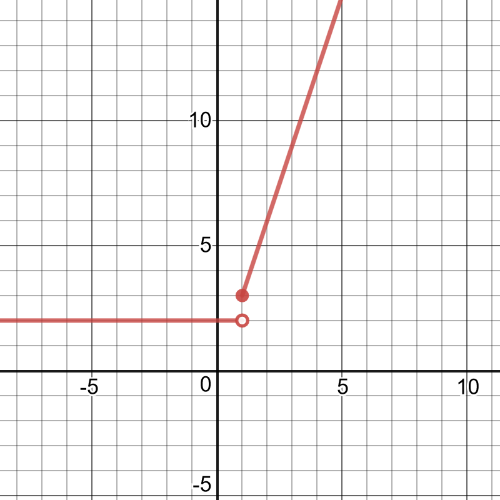
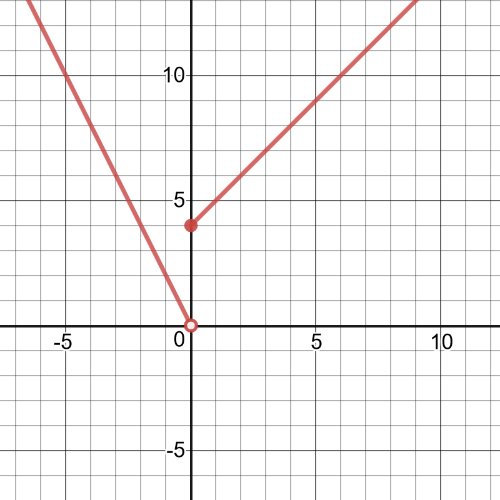
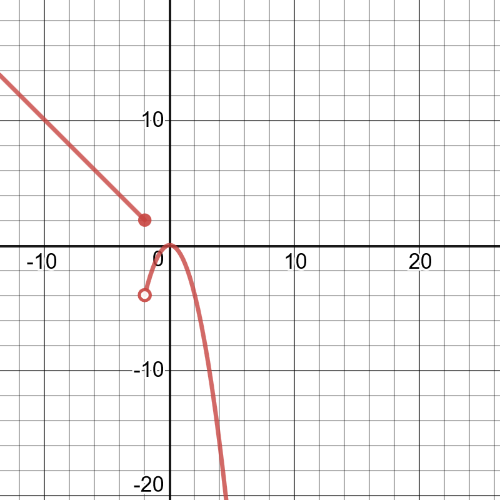
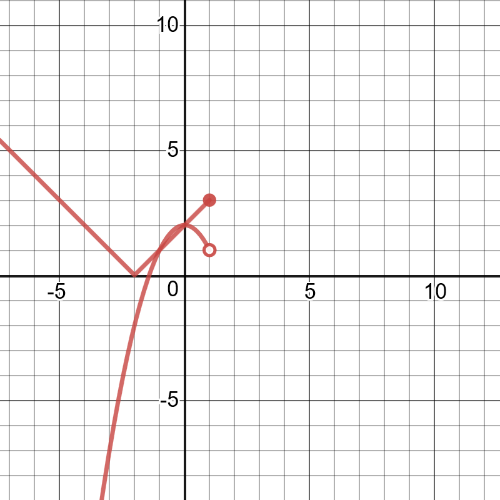
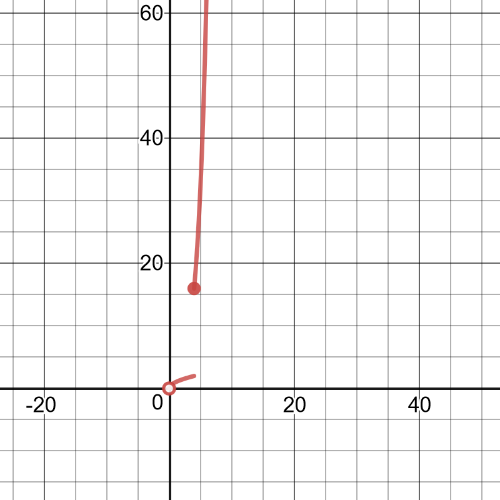
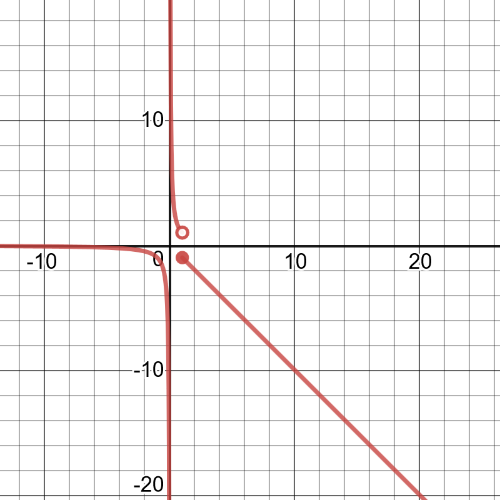
#### (a)
$f(x)$ $textbf{is discontinuous at}$ $x=1$
#### (b)
$f(x)$ $textbf{is discontinuous at}$ $x=0$
#### (c)
$f(x)$ $textbf{is discontinuous at}$ $x=-2$
#### (d)
$f(x)$ $textbf{is discontinuous at}$ $x=1$
#### (e)
$f(x)$ $textbf{is discontinuous at}$ $x=0$
#### (f)
$f(x)$ $textbf{is discontinuous at}$ $x=1$
#### (a)
$$
f(x)=begin{cases}
x^2-2 &, xleq1\
x+1 &, x>1\
end{cases}
$$
#### (b)
$$
f(x)=begin{cases}
left|x+1 right| &, x<1\
sqrt{x}+1 &, xgeq1\
end{cases}
$$
$$
f(x)=begin{cases}
x^2-2 &, xleq1\
x+1 &, x>1\
end{cases}
$$
#### (b)
$$
f(x)=begin{cases}
left|x+1 right| &, x<1\
sqrt{x}+1 &, xgeq1\
end{cases}
$$
$textbf{The domain}$ of this function is $D=Bbb{R}$.
This function is $textbf{discontinuous}$ because all the pieces of
the function not join together at the endpoints of the given intervals.
#### (b)
$textbf{The domain}$ of this function is $D=Bbb{R}$.
This function is $textbf{continuous}$ because all the pieces of
the function join together at the endpoints of the given intervals.
This function is $textbf{discontionuous}$ because all the pieces of
the function not join together at the endpoints of the given intervals.
$textbf{The domain}$ of this function is $D=Bbb{R}$ and $textbf{the range}$ is $R=left{2,3 right}$.
$textbf{The graph}$ of this function is on the following picture:
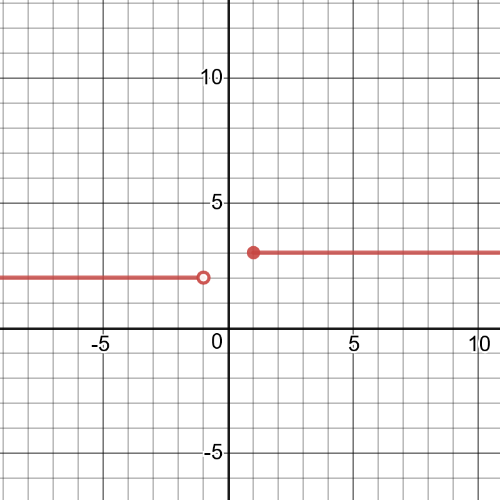
This function is $textbf{contionuous}$ because all the pieces of
the function join together at the endpoints of the given intervals.
$textbf{The domain}$ of this function is $D=Bbb{R}$ and $textbf{the range}$ is $R=left[0,infty right)$.
$textbf{The graph}$ of this function is on the following picture:
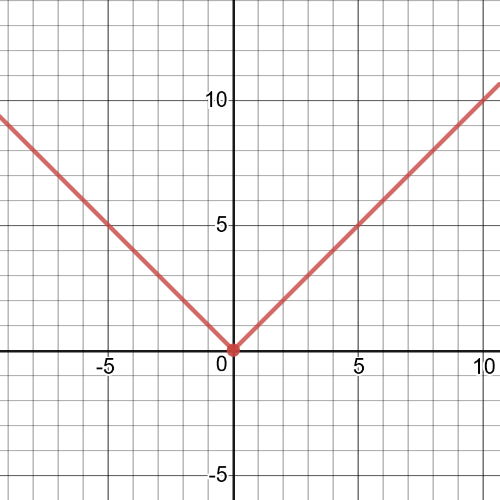
This function is $textbf{contionuous}$ because all the pieces of
the function join together at the endpoints of the given intervals.
$textbf{The domain}$ of this function is $D=Bbb{R}$ and $textbf{the range}$ is $R=left[1,infty right)$.
$textbf{The graph}$ of this function is on the following picture:
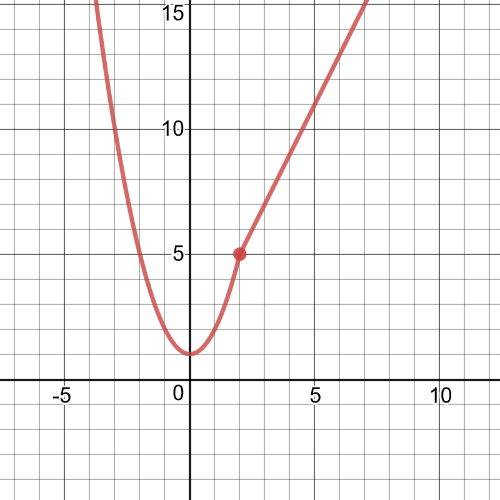
This function is $textbf{contionuous}$ because all the pieces of
the function join together at the endpoints of the given intervals.
$textbf{The domain}$ of this function is $D=Bbb{R}$ and $textbf{the range}$ is $R=left[1,5 right]$.
$textbf{The graph}$ of this function is on the following picture:

Graham’s total long-distance charge in terms of the number of long
distance minutes he uses in a month is:
$$
f(x)=begin{cases}
15 &, xleq500\
0.02&, x>500\
end{cases}
$$
$$
f(x)=begin{cases}
0.35x &, 0leq{x}leq100000\
0.45x-10000 &, 100000500000\
end{cases}
$$
f(x)=begin{cases}
0.35x &, 0leq{x}leq100000\
0.45x-10000 &, 100000500000\
end{cases}
$$
Here we have $textbf{the graph}$ of this function, for $k=4$:
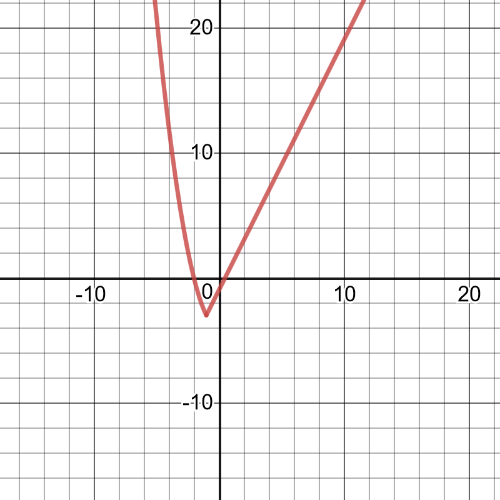
Here we have $textbf{the graph}$ of this function:
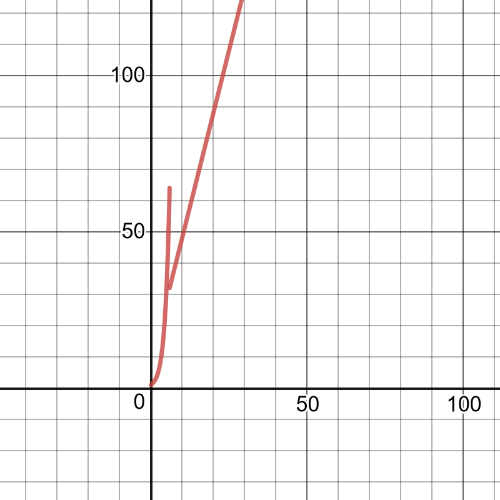
This function is $textbf{discontinuous}$ at $x=6$.
#### (c)
We will calculate $2^x-(4x+8)$ at $x=6$.
$2^6-(4cdot6+8)=64-32=32$ fishes.
#### (d)
Using the function that represents the time after the spill
$4x+8=64$
$4x=56$
$x=14$
#### (e)
For example: $3$ possible events are environmental chages, introduction of a new predator and increased fishing.
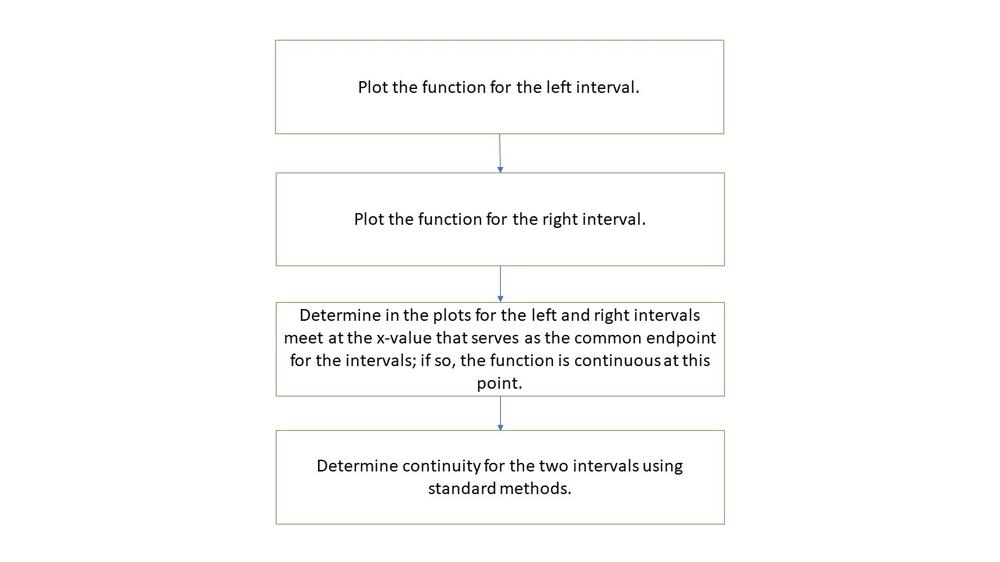
f(x)=begin{cases}
x+3 &, xgeq-3\
-(x+3) &, x<-3\
end{cases}
$$
And,here is the graph which follows this function:
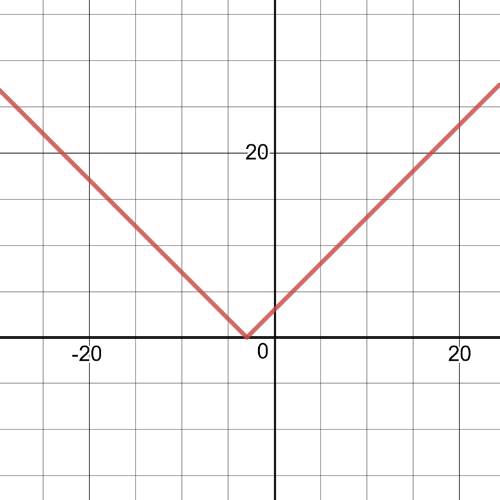
the function join together at the endpoints of the given intervals.We can see that from the following graph of this function:
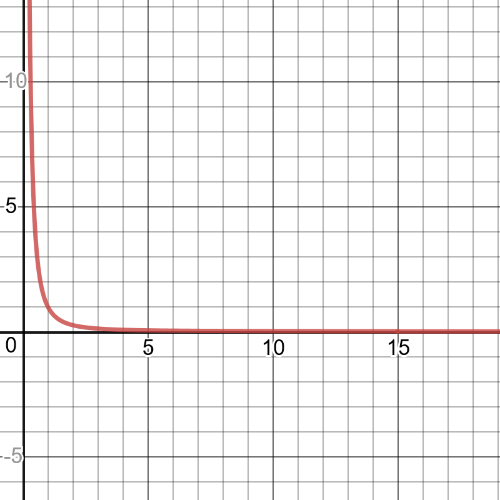
$$
f(x)=begin{cases}
0 &, 0leq{x}<10\
10 &, 10leq{x}<20\
20 &, 20leq{x}<30\
30 &, 30leq{x}<40\
40 &, 40leq{x}<50\
end{cases}
$$
And, $textbf{the graph}$ of this function is on the following picture:
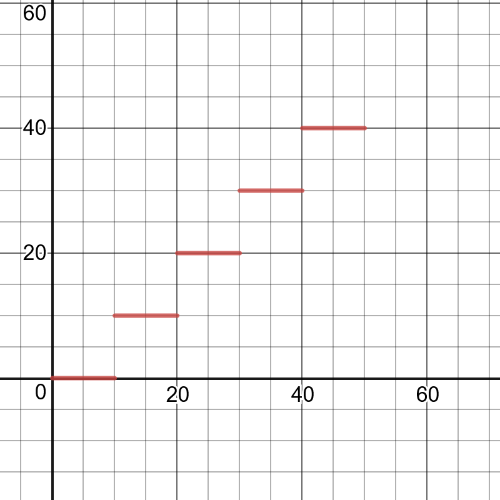
f(x)=begin{cases}
0 &, 0leq{x}<10\
10 &, 10leq{x}<20\
20 &, 20leq{x}<30\
30 &, 30leq{x}<40\
40 &, 40leq{x}<50\
end{cases}
$$

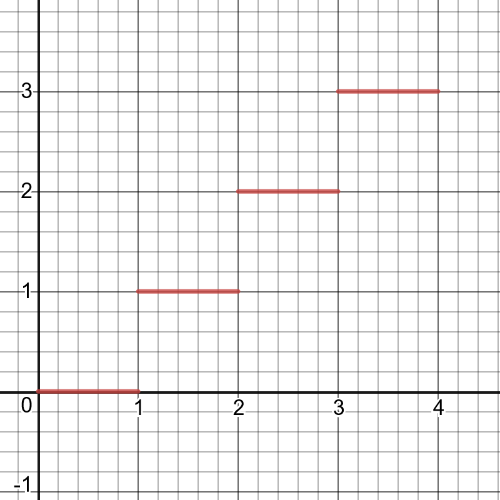
For example, for this task we can use $textbf{following function}$ which is made of three parent functions, $y=e^x$, $y=sqrt{x}$ and $y=x$.
$$
f(x)=begin{cases}
e^x &, -4leq{x}<0\
sqrt{x} &, 0leq{x}<4\
x &, {x}geq4\
end{cases}
$$
#### (b)
Here we have $textbf{the graph}$ of the function we created at $(a)$:
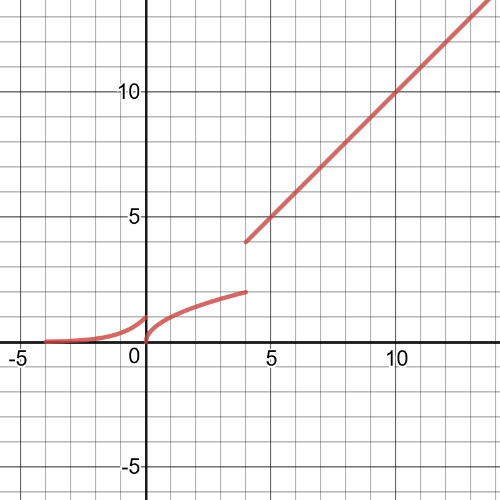
This function is $textbf{discontinuous}$ because all the pieces of
the function not join together at the endpoints of the given intervals.We can see that from previous graph of this function.
#### (d)
We can transform function we made at $(a)$ in the following function and by this transformation we will make continious function:
$$
f(x)=begin{cases}
e^x-1 &, -4leq{x}<0\
sqrt{x} &, 0leq{x}<4\
x-2 &, {x}geq4\
end{cases}
$$
We can see and from the following graph of this transformed function that it is $textbf{continuous}$:
